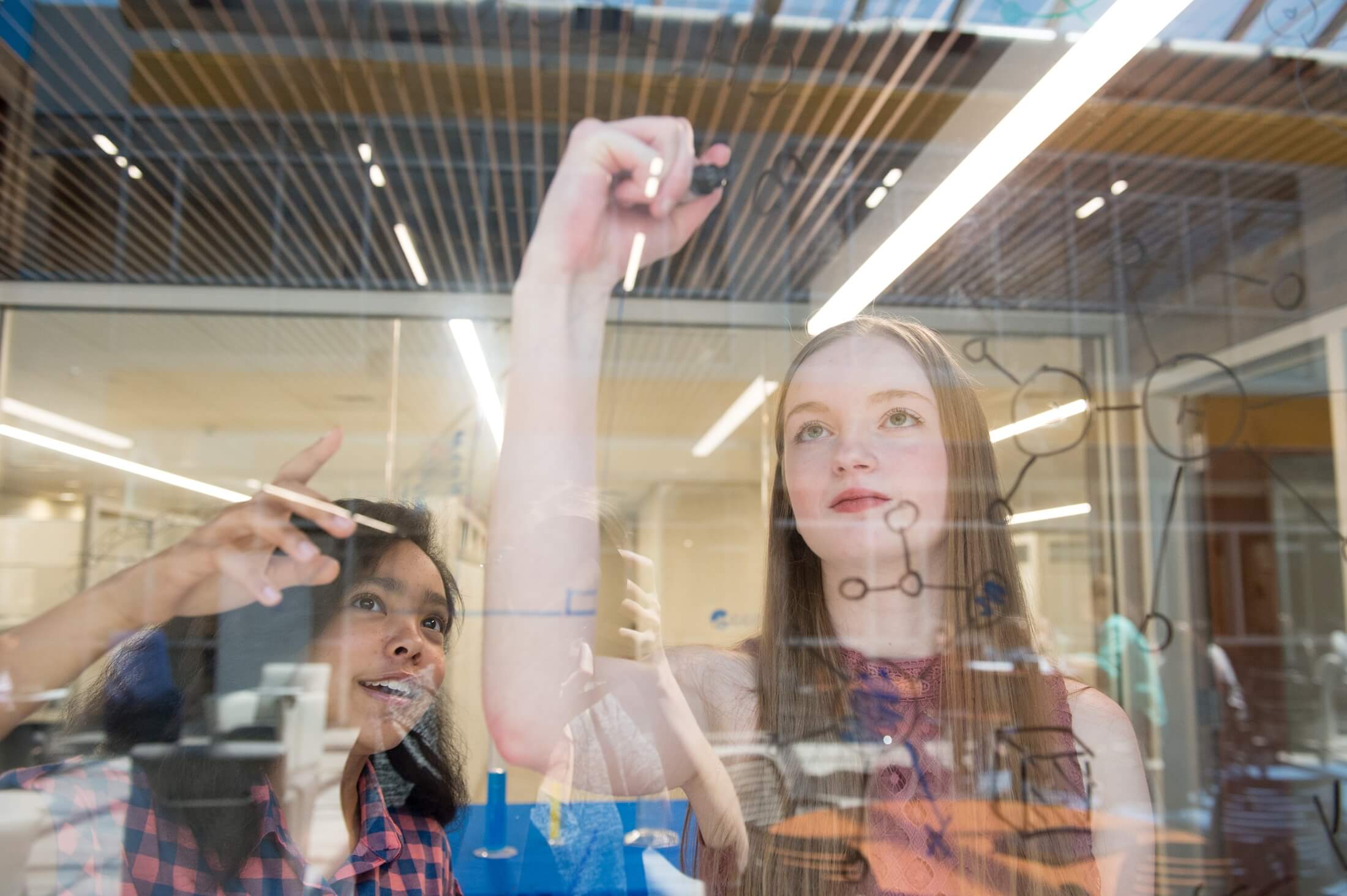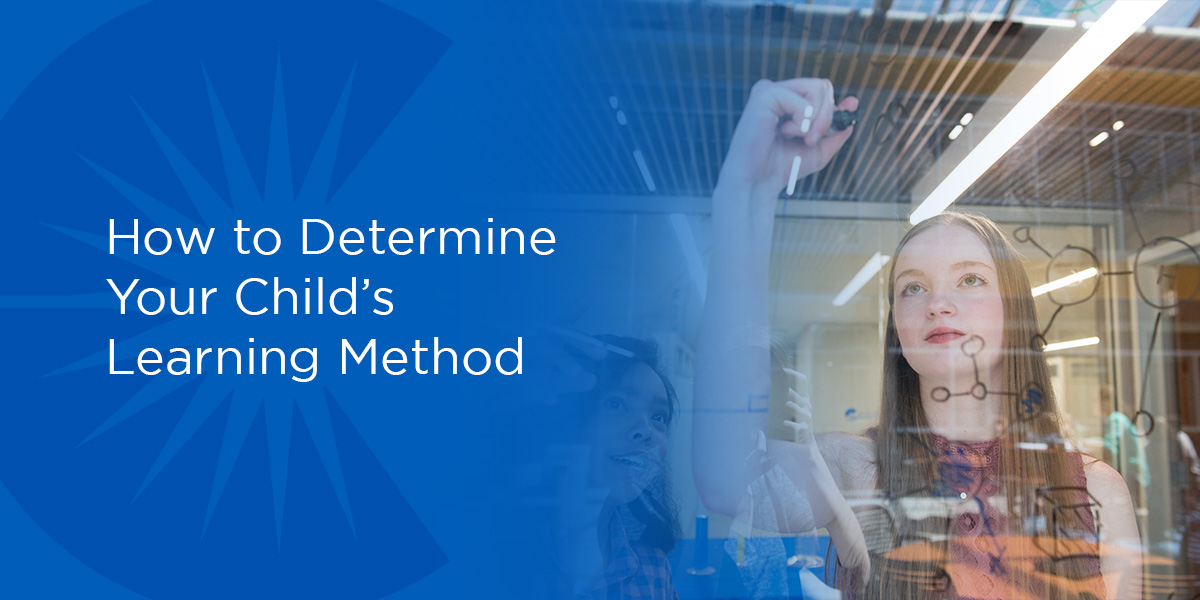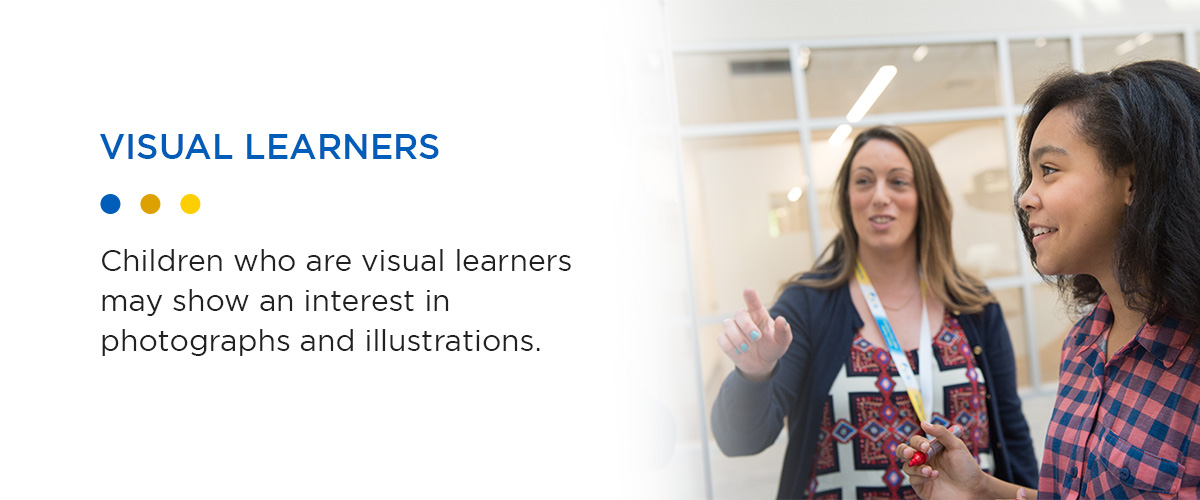2025-2026 School Year Enrollment Now Open. Click Here
2025-2026 School Year Enrollment Now Open. Click Here


Children learn differently and see the world through their own lens, which can impact their experience in the classroom. It is important to affirm this lens in a way that allows them to build on their natural strengths.
A CCA parent or caretaker can help identify a child’s learning preferences to guide them on their path to academic success. At CCA, our exclusive learning management system, edio®, provides courses that can be personalized for each child’s learning preferences.
Knowing your child’s preferred methods of learning can help them study effectively and find the after-school activities, camps, and extracurricular classes that fit them best.
Parents and educators have identified four main types of learning— kinesthetic, visual, auditory, and reading and writing. Your child may display some aptitude for more than one of these learning methods. For example, they may feel inclined toward auditory and kinesthetic or visual and reading and writing. Therefore, identifying the best method might take a little detective work. Ultimately, this recognition can help you tailor your child’s education to better suit their needs.
Kinesthetic learners are driven by the sense of touch. They are very active and physically expressive and learn best by doing things themselves. However, kinesthetic learners can struggle with following directions.
Signs your child is a kinesthetic learner might include:
Learning tools that may work best for a kinesthetic learner include craft projects, math manipulatives, tracing, creating visual tools, and dramatic plays.

Visual learners observe the world around them. Children who are visual learners may show an interest in photographs and illustrations. They also tend to retain information presented on screens like computers or televisions. However, they may struggle to think “outside the box.”
Signs your child is a visual learner could include:
Learning tools that may be helpful for visual learners include matching games, flashcards, pictures, graphs, timelines, videos, and maps.
Auditory learners prefer to take in information by listening. They’re great communicators and often learn to talk at an early age. They also tend to remember verbal instructions, songs, and stories. However, they may struggle with attention to detail in written work, math, science, and history.
Signs your child is an auditory learner might include:
Learning tools for auditory learners include music, rhymes, audiobooks, and conversations.
Reading and writing learners prefer to absorb information by — you guessed it — reading and writing. This learning method is often considered a sub-method of visual learning. Reading and writing learners might enjoy reading articles and taking notes in class. Your child may learn best when it’s quiet.
Signs your child is a reading and writing learner might include:
Learning tools for reading and writing learners include flashcards, checklists, organized notes or study materials, and reference materials like dictionaries.
A child may exhibit traits in more than one area, with one method proving stronger than the rest. These tips can help you identify when your child learns best:
It’s important to remember that intelligence is fluid and ever-changing, meaning your child’s learning preferences might change over time as they grow!
At Commonwealth Charter Academy, we offer courses that can be personalized to fit the kind of learner your child is! CCA provides a personalized approach to education that helps learners succeed in the classroom and out there in the world. Contact us today if you’re interested in seeing if CCA is right for your learner and your family!
2025-2026 School Year Enrollment Now Open. Click Here